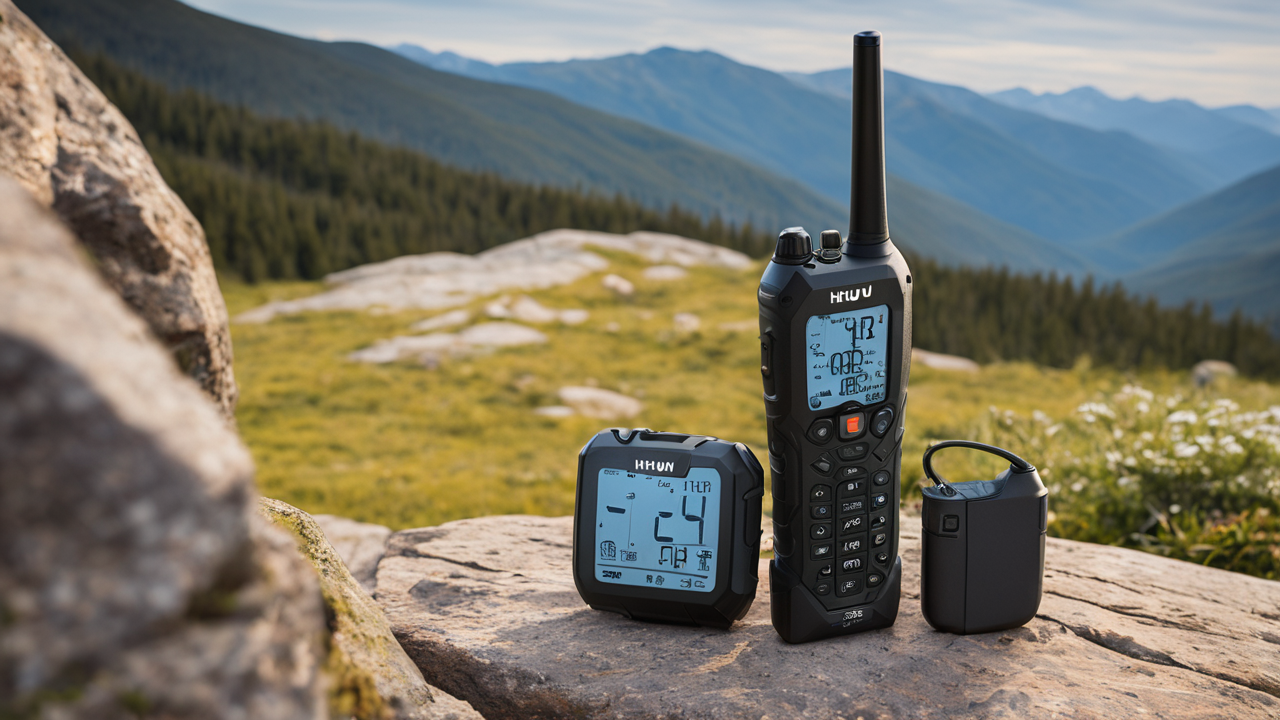Understanding Long Distance Walkie Talkie Technologies
The Basics of Walkie Talkie Transmission
Walkie talkies use radio waves to send and receive voice messages. They work on specific frequencies, allowing for two-way communication. The basic components include an antenna, transmitter, receiver, and speaker.

Long distance walkie talkies have stronger transmitters. This lets them send signals further. They also have better antennas to catch weak signals from far away. The quality of these parts affects how far the device can reach.
Most walkie talkies use either UHF or VHF frequencies. UHF works well in buildings and urban areas. VHF is better for open spaces and outdoor use. Knowing this helps choose the right type for your needs.
Advancements in Long Distance Communication
Recent tech improvements have boosted walkie talkie range and clarity. Digital signal processing cleans up audio, reducing noise. This makes messages clearer, even from far away.
Frequency hopping spread spectrum (FHSS) is another key advance. It rapidly switches frequencies to avoid interference. This results in clearer signals and better security.
Some new models use GPS for location sharing. This is great for group activities outdoors. You can track team members' positions on a map. It's a useful safety feature for hikers and campers.
The Role of Frequencies and Channels
Walkie talkies operate on different frequency bands. In the US, common ones are FRS, GMRS, and MURS. Each has its own rules and range limits.
FRS (Family Radio Service) is license-free but has lower power. GMRS (General Mobile Radio Service) allows higher power but needs a license. MURS (Multi-Use Radio Service) is a mix, with some channels needing no license.
More channels mean less chance of interference. High-end models often have hundreds of channels. This lets large groups communicate without overlap. It's also useful in busy areas with many radio users.
Comparing Top Long Distance Walkie Talkies
Distance Capabilities and Range
Long distance walkie talkies can reach impressive ranges. Some claim up to 35 miles in ideal conditions. However, real-world range is often much less due to obstacles.

Factors affecting range include terrain, weather, and obstacles. Open water or flat land gives the best range. Hills, buildings, and dense forests reduce it. Rainy or foggy weather can also limit the signal.
To compare models, look at both claimed and real-world ranges. User reviews often give a better idea of actual performance. Remember, higher wattage generally means better range.
Features and User Interface
Modern long distance walkie talkies offer many features. Common ones include:
- Weather alerts
- VOX (voice-activated transmission)
- Privacy codes
- Hands-free operation
- Backlit displays
- SOS signals
The user interface should be simple and intuitive. Look for large buttons and clear displays. This is crucial when using the device with gloves or in low light.
Some models connect to smartphones via Bluetooth. This allows for extended features through apps. It can add mapping, messaging, and more advanced functions.
Durability and Battery Life for Outdoor Use
For outdoor enthusiasts, durability is key. Look for devices with high IP ratings for water and dust resistance. Shock-resistant designs help survive drops and rough handling.
Battery life varies widely between models. Some last only a few hours, while others can go for days. Rechargeable batteries are convenient but can be a hassle in remote areas. Models that also accept standard AA batteries offer more flexibility.
Extra features like power-saving modes can extend battery life. Some have solar charging options, ideal for long trips. Consider your typical usage when evaluating battery performance.
Selecting the Best Long Distance Walkie Talkie for You
Considerations for the American Outdoors
The American outdoors offers diverse environments. From dense forests to open deserts, each presents unique challenges. Choose a walkie talkie that suits your typical terrain.

For mountain hikers, models with altimeters and barometers are useful. Desert explorers might prioritize dust resistance and solar charging. Those in wet climates should focus on waterproof ratings.
Consider the size and weight of the device. A bulky walkie talkie can be a burden on long hikes. However, larger units often offer better range and battery life. Find a balance that works for your activities.
Licensing and Regulations in the United States
In the US, some walkie talkies require a license to operate legally. GMRS radios need an FCC license. It's easy to get but comes with a fee. FRS and MURS radios don't need licenses for personal use.
Be aware of power output limits. FRS radios are limited to 2 watts. GMRS allows up to 50 watts, but only with a license. MURS is limited to 2 watts but has fewer users, meaning less interference.
Always check local regulations before use. Some areas, like national parks, may have specific rules about radio use. Staying informed helps avoid fines and ensures responsible usage.
User Experiences and Recommendations
Real-world user experiences offer valuable insights. Look for reviews from people doing similar activities. They can highlight pros and cons not obvious from specs alone.
Popular brands often have large user communities. This can be helpful for troubleshooting and tips. Forums and social media groups are good sources of information.
Consider factors like customer support and warranty. A good warranty can be crucial for devices used in tough conditions. Responsive customer service can help solve issues quickly.
Remember, the best long distance walkie talkie is the one that fits your specific needs. Balance features, price, and practicality. With the right choice, you'll stay connected and safe in your outdoor adventures.


